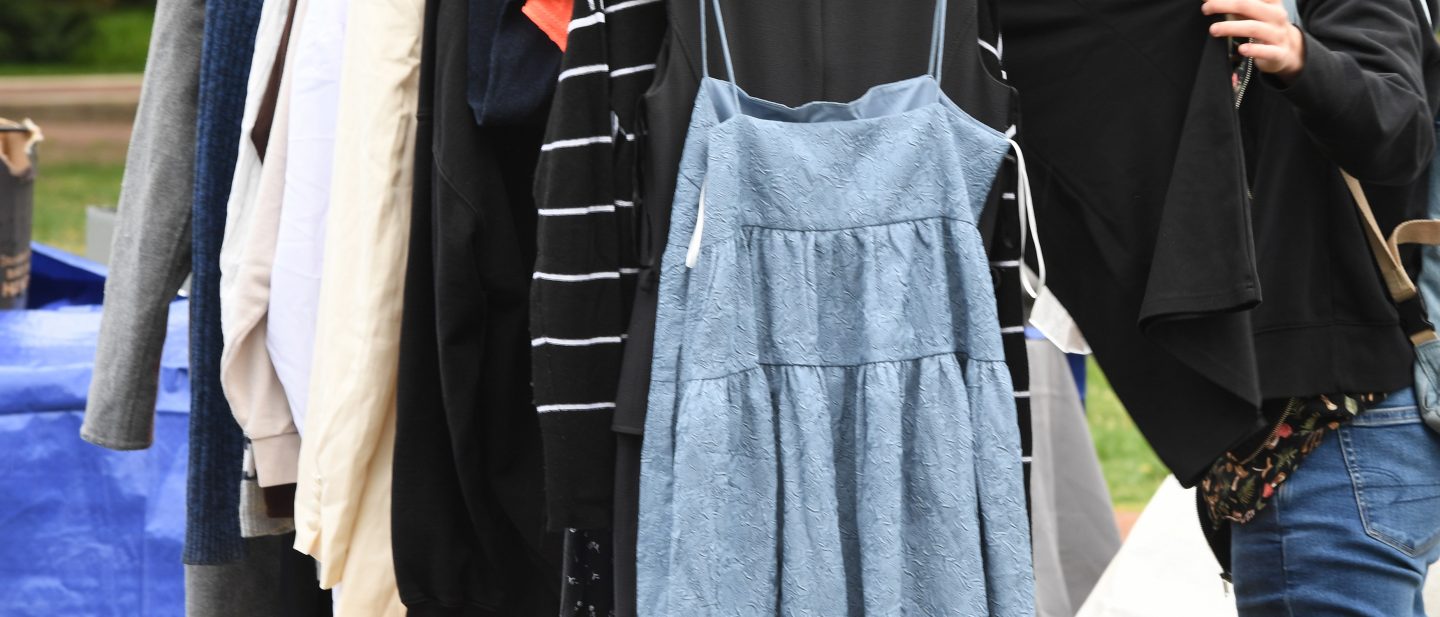
There are many strategies for building more responsible consumption habits, including on our website! For this Green Guide, we’re focusing on the “no-buy” or “low-buy” challenge as a tangible exercise to build awareness and change around daily consumption habits. Especially as we navigate digital environments oversaturated with targeted advertising, brand endorsements, and algorithms marketing flashy new things, the challenge is about decentering consumption in our daily lives, getting creative with what we have—and making a positive impact on the planet. 
Steps to a no/low-buy year
1. Set your motivations: Why do you want to reduce your consumption? It may seem like a “good” in itself, but being clear about your goals can help you strategize. For example,
– No-buy to save money might look like only spending only on necessities.
– No-buy for sustainability might mean spending on experiences like dinner or concerts, but not goods; or purchasing only second-hand or free goods from places like Marketplace.
– No-buy for decluttering might mean second-hand is off-limits.
2. Set an attainable time period: It can be helpful to start building habits with small, achievable steps to build confidence and make changes to your strategy as needed. Start with a no-buy or low-buy period that feels attainable – maybe a week, or a month, rather than committing yourself for a year.
3. Make a list of essentials: Think, food, medicine, class materials…
4. Set a few “absolute-no” categories: What do you have too much of? What do you struggle to put away? (Many no-buy advocates start this list with clothing!)
5. Create a set of criteria for new non-essential purchases: For example, you can replace items once you have used up all of that item (not just your favorite brand of it). If you have four lip balms, replace once you’re down to one.
6. Hash out the grey areas: While there are always edge cases that don’t fit your criteria, try to think through what these may be in advance. It is much harder to make conscious decisions aligned with your low-buy goals while experiencing the dopamine rush or instant gratification of an impulse buy.
This can be a checklist of simple questions. It’s helpful here to think about what value “stuff” brings into your life. A sample list might be:
– Was I influenced to want this item (through social media, an ad, a friend)?
– Have I thought about this purchase for more than [time period]?
Hint: it never hurts to let something sit in your cart!
– Is this replacing or duplicating something I already have, or could make?
– Can I borrow this instead of buying it?
– Would I forget about this item if it was in storage for a few months?
– Will this item improve my quality of life?
7. Redirect your urges to buy toward activities that bring a different kind of dopamine rush, or fit better with your goals.
8. Review at the end of your no-or-low-buy period and make changes depending on how your experience aligned with your goals.